Oxygen saturation is one of the core vital signs, alongside body temperature, pulse, respiration rate, and blood pressure. It indicates how effectively the lungs, heart, and circulatory system are working together to deliver oxygen throughout the body. Monitoring oxygen saturation is essential for detecting conditions such as hypoxia, which can quickly become life-threatening if left untreated. With the widespread use of pulse oximeters, checking O₂ saturation has become routine in hospitals, clinics, and even home settings. This guide will help readers understand what oxygen saturation is, how it is accurately measured, the factors that can affect it, and why it is so important for maintaining good health.
What is Oxygen Saturation?
Oxygen saturation, or O₂ Sat, is an important vital sign that shows what percentage of a patient’s hemoglobin is carrying oxygen. Hemoglobin, found in red blood cells, picks up oxygen in the lungs and delivers it to the body’s tissues while carrying carbon dioxide back to the lungs to be exhaled. In clinical practice, oxygen saturation is measured directly as SaO₂ through an arterial blood gas (ABG) or more commonly as SpO₂ using a pulse oximeter, which is quick, painless, and easy to use at the bedside. For most healthy adults breathing room air, normal SpO₂ levels range from 95% to 100%—any drop below this can be an early sign of hypoxemia and should prompt further assessment and possible intervention. This guide will help nurses understand what oxygen saturation means, how to measure it accurately, and why it’s vital for monitoring and protecting patient safety.
Importance of Monitoring O₂ Sat in Clinical and Home Settings
Monitoring oxygen saturation (O₂ Sat) is a routine but critical part of nursing care in hospitals, clinics, and even at home. It provides quick, noninvasive information about how well a patient’s lungs and heart are delivering oxygen to the body. Here are a few key reasons why keeping a close eye on O₂ Sat is so important for patient safety and effective care:
1. Early Detection of Hypoxemia. Continuous monitoring helps nurses identify low oxygen levels (hypoxemia) before visible signs like cyanosis appear. Early detection means prompt intervention, which can prevent worsening respiratory distress or organ damage.
2. Guides Oxygen Therapy and Interventions. Knowing a patient’s O₂ Sat helps nurses adjust oxygen delivery, monitor response to treatments like nebulizers or CPAP, and decide when to escalate care. It ensures patients get enough oxygen without the risks of unnecessary over-oxygenation.
3. Monitors High-Risk Patients. Patients with conditions like COPD, pneumonia, heart failure, or COVID-19 need close O₂ Sat monitoring because they’re more likely to develop low oxygen levels quickly. Spotting drops early helps prevent complications and hospital readmissions.
4. Supports Safe Home Care. Many patients use home pulse oximeters to track oxygen levels during chronic illness, post-discharge recovery, or while on home oxygen. This empowers patients and families to recognize when to call their healthcare provider.
5. Evaluates Treatment Effectiveness. O₂ Sat trends help nurses and providers see if a patient is improving or deteriorating. This guides clinical decisions, such as whether to continue current treatment, add medications, or transfer to a higher level of care.
How Oxygen is Transported in the Blood
Oxygen enters the body through the lungs, where it moves across the alveoli into the bloodstream. About 98% of the oxygen in the blood binds to hemoglobin, the protein inside red blood cells, forming oxyhemoglobin. The remaining small percentage dissolves directly in the plasma. Hemoglobin then carries this oxygen-rich load through the circulatory system, delivering oxygen to the body’s tissues and organs, and picking up carbon dioxide to bring back to the lungs for removal. This continuous transport system is essential for producing energy and keeping every organ functioning properly.
Difference Between SaO₂ and SpO₂
SaO₂ stands for arterial oxygen saturation, which is measured directly through an arterial blood gas (ABG) sample taken from an artery. It gives a precise measurement of how much oxygen is bound to hemoglobin in arterial blood. In contrast, SpO₂ stands for peripheral oxygen saturation and is an estimate of SaO₂ measured noninvasively with a pulse oximeter placed on a finger, earlobe, or other site. While SpO₂ is very reliable for routine monitoring, SaO₂ is more accurate and is used when exact oxygen levels are needed, such as in critical care or when a patient’s condition is unstable.
Normal Physiological Ranges of SpO₂
Normal oxygen saturation levels can vary slightly depending on a patient’s age, health status, and underlying conditions. Nurses should be familiar with these ranges to know what is expected and when to be concerned. The table below provides a quick reference for typical SpO₂ values in different patient groups:
| Patient Group | Normal SpO₂ Range | Notes |
|---|---|---|
| Healthy Adults | 95% – 100% | Breathing room air at sea level |
| Children (Infants & Pediatrics) | 95% – 100% (can be slightly higher) | Infants and young children often maintain higher baseline saturations |
| Older Adults | ~94% – 98% | May trend lower due to age-related lung changes |
| Chronic Respiratory Conditions | 88% – 92% (as prescribed) | E.g., COPD patients — lower targets help prevent CO₂ retention |
Tip for Nurses. Always interpret oxygen saturation in the context of the patient’s baseline, underlying condition, and clinical signs.
Methods of Measuring Oxygen Saturation
Monitoring oxygen saturation is essential for assessing how well the body is delivering oxygen to tissues. Nurses rely on two primary methods—pulse oximetry and arterial blood gas (ABG) analysis—each with its own purpose, strengths, and limitations. Understanding how these methods work helps nurses choose the right tool and interpret results accurately.
Pulse Oximetry
A pulse oximeter is a noninvasive electronic device designed to measure arterial blood oxygen saturation using light sensors. It typically consists of a probe or clip containing light-emitting diodes (LEDs) and a photodetector. The probe is attached to a part of the body that is relatively thin and well-perfused so that light can pass through capillary blood. Common types of pulse oximeter probes and sites include:
- Finger clip sensors. The most common type, clipped onto a fingertip. The device shines red and infrared light through the finger and detects the amount absorbed, which varies with oxygenated vs. deoxygenated hemoglobin.
- Earlobe sensors. A clip attached to the earlobe, which is an area less prone to motion and often has good blood flow. Earlobe probes are useful if a patient’s hands are not accessible or have poor circulation.
- Forehead sensors. An adhesive or clip sensor placed on the forehead (just above the eyebrow) that uses reflectance oximetry (light reflected from blood in the forehead). Forehead sensors can be more reliable in patients with very low perfusion and are often seen in critical care settings.
- Other sites. In some cases, probes can be placed on the nose (bridge) or toe, and for infants, a wrap sensor is often placed around the foot or hand. The choice of site may depend on patient factors—for example, a toe or forefoot sensor might be used for an infant, and a forehead or earlobe sensor might be chosen if an adult patient has compromised circulation to the fingers.
Before using a pulse oximeter, the nurse should ensure the selected site is appropriate and free of barriers. Pulse oximeter sensors may be placed on the finger, toe, nose, earlobe, or forehead, or around an infant’s foot/hand, as noted above. It’s important to choose a site with adequate blood flow (perfusion). For instance, an earlobe or forehead may be used if a patient has cold extremities or poor peripheral circulation that could make a finger reading unreliable. Likewise, avoid any site that is edematous (swollen) or has compromised skin integrity (wounds) since that can affect accuracy or pose infection risk.
Steps for Accurate SpO₂ Readings
To get a reliable oxygen saturation reading, nurses need to apply the pulse oximeter correctly and watch for common mistakes. Following simple steps can help avoid false results and ensure the reading truly reflects the patient’s oxygen status. Here are the key steps for getting an accurate SpO₂ measurement every time:
1. Prepare the patient and equipment. Verify that the pulse oximeter device is functioning and has charged batteries or is plugged in. Explain the procedure to the patient to reduce anxiety—let them know it is a painless test that simply clips on a finger (or other site) to measure their blood oxygen. Ensure the patient is relatively still, as excessive movement can interfere with the reading.
2. Select and inspect the site. Choose an appropriate monitoring site (commonly a finger for adults). Check the site for adequate circulation—it should be warm and pink. If using a finger, ensure there is no nail polish or artificial nail, because certain nail polish colors (especially dark shades like blue or black) and acrylic nails can block the sensor light and alter the reading. If needed, remove nail polish or select an alternate site (earlobe or toe) that is free of polish. Also, if the patient’s fingers are very cold (vasoconstricted), you may rub or warm the finger or use the earlobe which is less affected by peripheral vasoconstriction.
3. Apply the sensor correctly. Attach the probe securely to the site. For a spring-loaded clip (finger or earlobe), position it so that the light emitter and detector are aligned opposite each other on either side of the tissue. The sensor should fit snugly but not so tight that it causes pressure or pain. For adhesive forehead or nose sensors, place them according to manufacturer instructions (typically on a flat area of the skin) and ensure good contact. Verify that the cable (if any) is secure and will not tug—a taut cable could pull the probe off or cause motion.
4. Turn on the oximeter and observe the reading. Most pulse oximeters will power on and begin displaying a saturation reading within a few seconds. Watch for the pulse indicator or waveform displayed by the oximeter—this tells you the device is detecting a pulse signal. Allow a few seconds for the reading to stabilize. The display will typically show the SpO₂ percentage and the pulse rate. A strong, regular waveform or pulse bar indicator suggests the reading is reliable. If the device alarms or the reading is very low initially, reposition the sensor and assess the patient (they may truly be hypoxic or there may be a placement issue).
5. Ensure accuracy. Correlate the pulse reading on the oximeter with the patient’s actual pulse (you can palpate the radial pulse and compare). If they significantly differ, the oximeter may not be picking up well. Check for causes of error (motion, poor contact, etc.) and reposition if needed. Make sure the patient isn’t moving the sensor site—ask them to keep their hand still. Also confirm that ambient conditions are optimal: for example, shield the sensor from very bright overhead lights or sunlight, which can interfere with the light sensor.
6. Interpret and document the result. Once a stable reading is obtained, note the SpO₂ value and the corresponding pulse rate. Document these in the patient’s chart along with the amount of oxygen the patient is receiving (if any) and the site used (e.g., “SpO₂ 97% on room air, via finger probe”). If the reading is outside normal range (too low), take appropriate action as outlined in the intervention section below and document those actions and subsequent readings.
Advantages of Using Pulse Oxymeter
Pulse oximetry offers several important advantages that make it an essential tool in everyday nursing practice. Its speed, ease of use, and noninvasive nature allow nurses to monitor patients efficiently and detect problems early. These benefits make it especially useful for routine checks, procedures, and continuous monitoring in various healthcare settings.
- Quick. Provides immediate results at the bedside or during routine checks, making it ideal for rapid assessments.
- Painless and Noninvasive. Uses an external probe with no needles or blood draws, which reduces patient discomfort and infection risk.
- Real-Time Monitoring. Allows continuous tracking of oxygen levels during procedures, sedation, recovery, or in critical care, so changes can be detected early.
- Easy to Use. Simple to apply with minimal training — nurses and other healthcare providers can check oxygenation frequently with minimal disruption to the patient.
Limitations of Pulse Oximetry
While pulse oximetry is a valuable and convenient tool, it’s important for nurses to remember that it has some key limitations. Various factors can interfere with its accuracy and lead to misleading readings if not recognized. Understanding these limitations helps nurses interpret SpO₂ results safely and make better clinical decisions.
- Affected by Motion. Patient movement, tremors, or shivering can cause inaccurate or fluctuating readings by interfering with the sensor’s light detection.
- Poor Peripheral Perfusion. Low blood flow (due to shock, cold extremities, or vascular disease) can make it hard for the probe to detect a clear pulse signal.
- External Factors. Nail polish, artificial nails, and very bright ambient light can block or distort the sensor’s light, resulting in falsely low or erratic readings.
- Skin Pigmentation. Studies show pulse oximeters can overestimate oxygen levels in people with darker skin tones, so it’s important to correlate readings with clinical signs.
- Medical Conditions. Conditions like carbon monoxide poisoning or methemoglobinemia can fool the device — for example, it may show a normal SpO₂ when the blood is actually not delivering oxygen effectively.
- Estimates Only. Pulse oximetry measures how full hemoglobin is with oxygen, but not how much hemoglobin there is — so it doesn’t detect anemia or provide full details like an arterial blood gas (ABG) does.
Arterial Blood Gas (ABG) Analysis
While pulse oximetry is convenient for quick checks, sometimes a deeper look at a patient’s oxygenation is needed. This is where arterial blood gas (ABG) analysis comes in, offering more detailed and accurate information. ABG analysis directly measures SaO₂ (arterial oxygen saturation) by sampling arterial blood and analyzing it in a lab. It also provides other critical information, including PaO₂ (partial pressure of oxygen), PaCO₂, pH, and bicarbonate levels—giving a full picture of oxygenation, ventilation, and acid-base balance.
Indications for ABG vs. Pulse Oximetry
ABGs are indicated when precise measurement is needed, such as in critically ill patients, suspected carbon monoxide poisoning, unexplained hypoxia, or when ventilation and acid-base status must be assessed. Pulse oximetry is best for routine monitoring and screening, while ABGs confirm or clarify concerns when pulse ox readings don’t match clinical signs.
Advantages of Arterial Blood Gas (ABG) Analysis
The following are the key advantages of arterial blood gas (ABG) analysis that make it an essential tool in certain clinical situations:
- Noninvasive and Painless. Pulse oximetry uses an external probe, so there’s no needle stick, no pain, and no risk of infection—patients generally tolerate it very well.
- Quick and Easy to Use. Nurses can get SpO₂ readings within seconds at the bedside, which is especially useful in emergencies or routine checks. The device is simple to operate and requires minimal training.
- Continuous Monitoring. Pulse oximeters can stay in place to give ongoing, real-time readings of oxygen saturation and pulse rate. This makes it easy to detect sudden drops in oxygen levels and intervene promptly.
Disadvantages of Arterial Blood Gas (ABG) Analysis
The following are some important disadvantages of arterial blood gas (ABG) analysis that nurses should consider before ordering or performing this test:
- Limited Information. A pulse oximeter only estimates SpO₂ — it does not measure PaO₂, carbon dioxide levels, pH, or acid-base balance. If more detailed information is needed, an ABG is still required.
- Affected by External Factors. Many things can affect accuracy, including patient movement, poor peripheral perfusion, nail polish, skin pigmentation, bright lights, or faulty sensors. Nurses must know these pitfalls to interpret readings correctly.
- Not Reliable for Some Conditions. In cases like carbon monoxide poisoning, methemoglobinemia, or severe anemia, a pulse ox may show a normal reading even though the patient is not getting enough usable oxygen. In these situations, an ABG or co-oximeter is necessary to detect hidden problems.
Normal Oxygen Saturation Values
In a healthy adult at sea level, normal arterial oxygen saturation (SaO₂) ranges from 95% to 100%, meaning nearly all hemoglobin is carrying oxygen to the tissues. An SpO₂ in the mid-90s or higher is considered normoxemia, showing the lungs and heart are functioning well. Oxygen saturation rarely reaches a perfect 100% on room air because a small amount of hemoglobin may not be fully saturated.
It’s important to remember that “normal” values can vary based on altitude and chronic respiratory conditions. For example, people living at high altitudes or those with severe COPD may normally run lower saturations (e.g., 88–92%) without needing intervention. However, for the average adult, any persistent saturation below 95% on room air should prompt further evaluation. Age alone does not cause major drops — healthy older adults should still have SpO₂ in the mid-90s.
Interpretation of results should always be done in context. An SpO₂ of 95–100% means the blood is well oxygenated. Readings around 90–94% are borderline — acceptable at times, but not ideal, and should be investigated if unusual for the patient. SpO₂ below 90% indicates hypoxemia and needs immediate attention. Many hospital protocols treat SpO₂ < 90% as an emergency, often requiring supplemental oxygen or a rapid response if levels do not improve quickly.
Oxygen Saturation Ranges and Clinical Significance
| SpO₂ Reading (%, on room air) | Interpretation & Clinical Significance |
|---|---|
| 95% – 100% | Normal oxygenation. Indicates adequate oxygen delivery in a healthy person. No intervention needed if the patient is breathing comfortably. |
| 90% – 94% | Slightly low (mild desaturation). This is below the ideal range. Check the patient’s condition; may be acceptable in some individuals with chronic lung disease or at high altitude, but for most patients it suggests early hypoxemia. The nurse should investigate possible causes (e.g., is the patient hypoventilating, or is the reading faulty?) and be prepared to intervene (such as encouraging deep breathing or administering low-flow oxygen if ordered). |
| 85% – 89% | Moderate hypoxemia. Oxygen saturation is significantly below normal. The patient is likely not getting sufficient oxygen. Verify the reading and assess the patient for signs of respiratory distress. Generally, supplemental oxygen is indicated at this level. Without intervention, organ function may be compromised. |
| < 85% (especially ≤ 80%) | Severe hypoxemia. Dangerously low oxygen level. Typically associated with clear signs of oxygen deprivation (e.g. confusion, cyanosis—bluish discoloration of skin). This is an emergency—immediate interventions are required (increase oxygen delivery, assist ventilation as needed). Prolonged saturation < 80% can result in organ damage or cardiac arrest. Many institutions treat SpO₂ readings in the low 80s or below as a trigger for calling a rapid response or code blue. |
| < 70% | Critical, life-threatening level. An SpO₂ below 70% is often life-threatening and may be incompatible with life if not quickly corrected. In addition, pulse oximeters may be less accurate at this extreme, so the true oxygen level could be even lower. The patient in this range is at severe risk of cardiac dysrhythmias, brain injury, or death. This situation mandates emergency response (advanced airway management, ventilation, and CPR if necessary). |
The thresholds above assume readings on a reliable pulse oximeter in an adult patient. Desaturation is a general term used to describe a drop in oxygen saturation from a baseline or normal level. For instance, if a patient’s SpO₂ falls from 98% to 88% during activity, this episode can be called an “oxygen desaturation.” Any sustained desaturation below normal should be addressed, even if it remains above 90%, because it could be an early sign of trouble. Also, remember that a normal SpO₂ does not guarantee the patient’s oxygen needs are fully met in all cases—for example, a patient with severe anemia might show 100% saturation (all hemoglobin saturated) but still have an overall low oxygen content in blood due to insufficient hemoglobin. Therefore, always correlate saturation readings with the patient’s overall clinical picture.
Abnormal Readings: Hypoxemia, Desaturation, and Clinical Implications
Hypoxemia means a lower-than-normal level of oxygen in the arterial blood, shown by a low SpO₂ (typically below 90%). When SpO₂ drops into the 80s or lower, tissues can develop hypoxia, which risks organ dysfunction or damage. The body compensates with a faster heart rate and breathing rate, but worsening hypoxemia can cause mental status changes and visible cyanosis (bluish lips or fingertips) as a late sign of severe oxygen lack.
Desaturation episodes are short-term drops in oxygen saturation, such as during sleep apnea or with exertion in lung disease. Even brief drops can be significant if they are deep or frequent, so nurses should watch SpO₂ trends and respond by stopping activity, letting the patient rest, or applying oxygen. Desaturation signals that oxygen delivery is falling short and should be corrected by addressing the cause.
Critical low SpO₂ (under 85–90%) is dangerous, and readings below 80% are life-threatening. Very low oxygen saturation increases the risk of cardiac arrest, brain injury, and multi-organ failure. Nursing standards treat SpO₂ below 90% as a medical emergency that requires fast action to restore safe oxygenation and prevent severe complications.
Factors Affecting Pulse Oximetry Accuracy
Pulse oximetry is a convenient tool, but it has limitations and can be influenced by various factors. Nurses must be aware of these factors to avoid misinterpreting readings and to troubleshoot a pulse ox that doesn’t match the patient’s condition. Key factors that can affect the accuracy of pulse oximeter readings include:
1. Motion artifact. Movement of the patient (e.g., shivering, shaking, or excessive motion of the hand where the probe is attached) can cause the oximeter to pick up erratic signals. Motion can make the device unable to distinguish the arterial pulse signal from noise, leading to fluctuating or false readings. For instance, a shivering patient may have an SpO₂ reading that jumps around or drops erroneously. The nurse should minimize motion at the sensor site or use ear/forehead probes if patient movement is unavoidable.
2. Ambient light interference. Very bright light in the environment can interfere with the photodetector. Strong direct sunlight or surgical lamps shining on a finger sensor can cause the oximeter to mis-read by adding light that “washes out” the signal. Covering the sensor with a towel or adjusting the patient’s hand away from light can mitigate this. Pulse oximeters work best in normal light conditions; most devices have some shielding, but it’s wise to be mindful of this factor.
3. Poor peripheral perfusion. The pulse ox relies on a good arterial pulse signal. If the patient has low blood flow to the extremities, the sensor may not detect a strong signal. Poor perfusion can occur due to hypotension (low blood pressure), shock, cold extremities (vasoconstriction), or peripheral vascular disease. For example, a patient in shock might have an SpO₂ reading that is erratic or fails to register because blood is being shunted away from the fingers. In such cases, using a central site like the earlobe or forehead, or improving circulation (warming the limb, treating the low blood pressure) can help.
4. Nail polish or artificial nails. Opaque nail polish (especially dark colors) and fake nails can absorb or block the red/infrared light that the probe uses, leading to falsely low readings or loss of signal. Studies have shown colors like blue, green, or black polish can significantly lower the displayed saturation. Newer evidence is mixed on the extent of this effect—some research suggests many nail polish colors may not drastically affect readings, but the safest practice is to remove nail polish or avoid that finger to ensure accuracy. If a patient has nail polish that cannot be removed quickly, the nurse can place the probe on a sideways position across the finger (somewhat bypassing the nail) or use an alternate site (earlobe, toe).
5. Skin pigmentation. Recent studies and advisories have noted that pulse oximeters can be less accurate in individuals with darkly pigmented skin. The devices may overestimate oxygen saturation in people with darker skin tones, meaning a truly low oxygen level might not be detected as quickly. This is thought to be due to the way light is absorbed by melanin. For example, an SpO₂ of 92% in a patient with very dark skin might actually correspond to a slightly lower arterial oxygen level than the same reading in a lighter-skinned patient. Nurses should be aware of this potential bias—if a patient with dark skin exhibits symptoms of hypoxia but the pulse ox reads slightly higher, it’s prudent to trust clinical signs and perhaps obtain an arterial blood gas for confirmation. Manufacturers and the FDA have been evaluating this issue, and it underlines the importance of looking at the whole patient, not just the number.
6. Carbon monoxide poisoning. Pulse oximeters cannot distinguish oxyhemoglobin (oxygen-bound hemoglobin) from carboxyhemoglobin (hemoglobin bound to carbon monoxide). Carbon monoxide (CO) binds to hemoglobin with high affinity, and when it does, the pulse ox will read those hemoglobin as “saturated” (because carboxyhemoglobin absorbs light similar to oxyhemoglobin). The result is a falsely normal or high SpO₂ reading despite the patient actually being hypoxemic. For example, a victim of CO poisoning might have cherry-red skin and an SpO₂ reading of 100% while their tissues are starving for oxygen. For this reason, pulse oximetry is unreliable in CO poisoning—a special CO-oximeter is required to detect carboxyhemoglobin. Smokers often have a few percent of carboxyhemoglobin chronically, which can make their SpO₂ read slightly higher than their true oxygenation. A nurse should suspect this source of error if the clinical picture and SpO₂ don’t align (e.g., patient is distressed, with headache and nausea from CO exposure, yet pulse ox reads 98%).
7. Anemia. Severe anemia (low red blood cell/hemoglobin count) can affect the interpretation of SpO₂. Interestingly, in anemia the pulse oximeter might still show a high saturation (because nearly all remaining hemoglobin is saturated with oxygen), but the total oxygen content of the blood is reduced. The device itself might not flag a problem, but the patient can still be hypoxic due to not enough hemoglobin to carry oxygen. Additionally, if anemia is extreme, tissue perfusion may suffer and affect readings. Nurses should remember that SpO₂ is only part of the oxygen delivery story—hemoglobin level and cardiac output also matter for actual oxygen delivery. If a patient is both anemic and has marginal oxygenation, they are at risk even if SpO₂ seems “okay.”
8. Other factors. Skin thickness or edema at the sensor site can dampen the signal. Intravenous dyes (like methylene blue used in surgeries) transiently change blood color and can artificially lower SpO₂ readings. Methemoglobinemia (a condition where hemoglobin is in an altered state that can’t carry oxygen) will make SpO₂ readings trend toward an intermediate value (~85%) regardless of true oxygenation—a special pulse ox (CO-oximeter) is needed in such cases. Also, equipment factors like a weak battery or a damaged probe can cause faulty readings; always consider the device integrity if numbers seem implausible.
In summary, while pulse oximetry is an extremely useful monitoring tool, the reading must be considered alongside the patient’s overall condition and potential interfering factors. If an SpO₂ reading is unexpected (either too low without patient signs, or normal when patient looks ill), the nurse should check for these factors and possibly re-check the saturation with a different probe or method. As one nursing article succinctly states: nurses should be aware of factors like anemia, vasoconstriction, skin pigmentation, etc., that might affect SpO₂ readings. By understanding these limitations, clinicians can avoid false alarms as well as avoid false reassurance.
The table below summarizes key factors that can impact pulse oximeter accuracy and practical considerations for each:
| Factor | How It Affects Readings | Nursing Considerations |
|---|---|---|
| Motion Artifact | Patient movement (shivering, tremors) causes erratic signals and fluctuating or false SpO₂ readings. | Minimize movement, consider alternate probe sites (earlobe, forehead) if unavoidable. |
| Ambient Light | Bright lights (sunlight, surgical lamps) can interfere with the sensor’s light detection. | Shield the probe from strong light using a towel or reposition the site away from direct light. |
| Poor Peripheral Perfusion | Low blood flow to extremities (shock, cold, hypotension) weakens the pulse signal. | Warm the site, treat underlying cause, or use central sites (earlobe, forehead). |
| Nail Polish/Artificial Nails | Dark polish or artificial nails can block or absorb sensor light, causing falsely low or missing readings. | Remove polish when possible; use a different finger, place the probe sideways, or select an alternate site. |
| Skin Pigmentation | Darker skin tones may slightly overestimate SpO₂ due to light absorption by melanin. | Be aware of possible bias; trust clinical signs and confirm with ABG if needed. |
| Carbon Monoxide Poisoning | CO binds hemoglobin, falsely elevating SpO₂ readings because pulse ox can’t distinguish carboxyhemoglobin from oxyhemoglobin. | Suspect CO poisoning if clinical signs don’t match SpO₂; use a CO-oximeter or ABG for accurate measurement. |
| Anemia | Severe anemia can show normal/high SpO₂ but actual oxygen content is low due to reduced hemoglobin. | Remember SpO₂ doesn’t show total oxygen delivery; check hemoglobin and overall patient status. |
| Other Factors | Edema, skin thickness, IV dyes, methemoglobinemia, weak batteries, or damaged probes can produce false readings. | Check the sensor site for swelling, verify equipment function, and use special tests (CO-oximeter) for conditions like methemoglobinemia. |
Nursing Interventions and Clinical Alerts for Abnormal SpO₂
When a patient’s oxygen saturation is below normal, prompt nursing interventions are crucial to improve oxygenation and prevent further deterioration. Likewise, modern monitors have alarm settings to create clinical alerts for low SpO₂, and nurses must respond immediately to such alerts. The general priorities are: ensure the reading is accurate, assess the patient’s airway and breathing, improve oxygen delivery, and escalate care if needed. Below is a structured approach to managing low oxygen saturation:
1. Check the patient’s condition first. If the SpO₂ alarm sounds or you notice a low reading, go to the patient and assess for signs of hypoxia. Look at their respiratory effort (are they breathing rapidly or struggling for breath?), their color (any cyanosis of lips or nail beds?), and mental status (restlessness, confusion?). A reading in the 80s or lower usually correlates with symptoms like shortness of breath, confusion, or cyanosis, but in some cases an alert patient might not feel different yet. Always prioritize the patient over the monitor—ensure they are safe and supported (for example, if they are very short of breath, have them stop any activity and sit up in bed to ease breathing).
2. Verify the accuracy of the reading. Quickly check if the low reading might be due to technical issues. Is the sensor positioned correctly? Check that it hasn’t fallen off or gotten loose. Is there adequate pulse signal? Maybe the patient’s hand is cold or they were moving. If the patient’s clinical appearance is not matching the reading (e.g. patient looks fine but oximeter says 75%), suspect an error—feel for a pulse and compare it to the oximeter’s pulse rate. Adjust the probe, try a different finger or the earlobe, and see if the reading improves. This step prevents unnecessary panic or intervention for a false alarm. However, do this check quickly—within seconds—because if the patient is truly hypoxemic, you don’t want to delay treatment.
3. Ensure a patent airway. A common cause of desaturation is an airway problem. Make sure the patient’s airway is open. If they are supine and groggy, their tongue might be occluding the airway—in such case, reposition the head or have them sit up. Suction any secretions if the patient is unable to clear mucus (such as in a postop patient who hasn’t coughed out anesthesia secretions). If the patient has a tracheostomy or other artificial airway, ensure it isn’t blocked or displaced.
4. Encourage deep breathing. Oftentimes, especially post-surgery or in those on pain medications, patients might be breathing shallowly (hypoventilating), causing lower SpO₂. Instruct the patient to take slow, deep breaths. You may coach them with an incentive spirometer if available—this can recruit more lung alveoli for gas exchange. Coughing can help if secretions are suspected to be impairing oxygenation (clearing mucus can improve airflow in the lungs). Monitor if the SpO₂ rises with these measures—an improvement suggests that shallow breathing was a factor.
5. Increase oxygen delivery. If the patient is on room air (no supplemental oxygen), consider applying oxygen if the SpO₂ is significantly low or the patient is symptomatic—follow your facility protocol or the provider’s orders. Typically, for an SpO₂ < 90%, supplemental oxygen is indicated. Apply a nasal cannula or face mask as needed. If the patient is already on oxygen, ensure that the oxygen source is functioning (e.g., check that the nasal cannula is in the nostrils, the oxygen tubing is connected, the tank is not empty, or the wall flowmeter is turned on to the prescribed rate). You may need to increase the flow rate temporarily if protocol allows and if the saturation is very low—for example, going from 2 L/min to 4 L/min nasal cannula—while awaiting further medical orders. Always be mindful of patients who rely on hypoxic drive (certain COPD patients); in those cases, rapid increases in O₂ are done carefully. That said, in an acute hypoxemic situation, giving oxygen and preventing hypoxia takes priority.
6. Position the patient optimally. Positioning can dramatically affect ventilation-perfusion matching in the lungs. If not contraindicated, sit the patient up (High Fowler’s position) to maximize lung expansion. Tripod position (leaning forward with support) can also help if the patient is in respiratory distress. Avoid leaving a hypoxemic patient lying flat on their back, as this can worsen oxygenation. In some situations, lateral or prone positioning can improve oxygenation, but these are specialty maneuvers (e.g., prone positioning in ARDS under intensive care). For a general ward scenario, upright is usually best.
7. Stay with the patient and provide support. Severe shortness of breath or hypoxemia can be frightening. Remain with the patient to continually monitor their status and provide reassurance. Encourage slow, controlled breathing if they are anxious (since panic can worsen hyperventilation or conversely lead to breath-holding). If they have oxygen on, make sure the device stays in place (some disoriented patients might remove it, requiring gentle coaching).
8. Call for help if needed. Know your institution’s policy for critical oxygen saturation levels. Many hospitals consider SpO₂ below 85% (or patient in obvious distress) as a trigger to call a Rapid Response Team (experienced critical care clinicians who can intervene before a condition spirals into a code). If at any point the patient’s status is worsening—for example, the saturation is dropping further despite your basic interventions, or the patient shows signs of impending respiratory failure (like very shallow respirations, lethargy, or cannot breathe effectively)—do not hesitate to get additional help immediately. This may mean calling a rapid response or Code Blue for imminent respiratory arrest. While waiting for advanced help, be prepared to support ventilation (for instance, by using a bag-valve mask to assist breathing if you are trained and the situation is dire).
9. Continually reassess. After any interventions (airway repositioning, oxygen therapy, etc.), observe the SpO₂ and the patient’s clinical signs to see if they are improving. The SpO₂ should rise toward safer levels (>90%) with effective measures. Also monitor other vital signs—hypoxemia can cause changes in heart rate and blood pressure that should normalize as oxygen improves. If the patient stabilizes, continue to monitor them more frequently, since a recurring desaturation could happen. Ensure all healthcare team members involved know about the episode (so they can investigate underlying causes).
10. Document and communicate. Thoroughly document the hypoxemic event, including the SpO₂ readings, patient symptoms, interventions taken, and the results. For example: “14:00—Patient noted with SpO₂ 88% on room air, appeared anxious and tachypneic. Repositioned patient upright, coached to deep breathe; applied 2 L O₂ via nasal cannula. SpO₂ improved to 95% after 3 minutes, patient reports feeling better. Dr. Smith notified.” Timely communication with the physician or advanced provider is important, as they may order further investigations (like an arterial blood gas or chest x-ray) or adjustments to the oxygen therapy.
Clinical alert thresholds. Most bedside monitors allow the nurse to set an SpO₂ alarm limit, commonly around 90%. An alarm sounding means the saturation has dropped below that limit for a certain number of seconds. Always respond immediately to such alarms—even if sometimes they are false (due to motion, etc.), one should assume it’s real until proven otherwise. In some patients, especially those on opioids or sedatives, maintain a higher level of vigilance; consider setting the alarm at 92% if you want an earlier warning, as these patients can decline fast. Remember that prevention is better than treatment: if you notice a patient’s saturation trending downward (even if not yet in alarm range), act early—have them do breathing exercises, check their oxygen device, etc., to avoid a dangerous drop. Educate patients (if alert) to call for help if they feel suddenly short of breath or dizzy (signs of possible desaturation), rather than waiting for the machine to alarm.
In summary, nursing interventions for low SpO₂ center on ensuring the reading is real, fixing any immediate issues (airway, breathing, equipment), supporting the patient with oxygen and positioning, and calling for advanced help when needed. Through diligent monitoring and prompt action, nurses can often catch and correct oxygenation problems before they lead to cardiac or respiratory arrest. Oxygen saturation is a vital sign that can change quickly, so proactive management and clear communication during any abnormal events are key to patient safety.
Example Scenario. A nurse on a post-surgical unit notices the oximeter of a patient (who is lying flat and drowsy from pain medication) alarming with SpO₂ of 85%. On entering the room, the nurse finds the patient is somnolent and breathing shallowly at 8 breaths/min. The patient’s lips are slightly dusky. Recognizing hypoventilation as the likely cause, the nurse immediately arouses the patient and prompts him to take deep breaths. She raises the head of the bed to High Fowler’s and applies a nasal cannula at 3 L/min per protocol. The patient’s SpO₂ improves to 93% over the next two minutes and his color returns. The nurse stays with the patient, continues to encourage deep breaths, and calls the physician to report the episode. Supplemental oxygen is maintained until the patient is fully awake and breathing adequately. In this scenario, early intervention prevented further desaturation, and the SpO₂ of 85% (which is a critical low value) was treated as an emergency—exactly as it should be to ensure the patient’s safety.
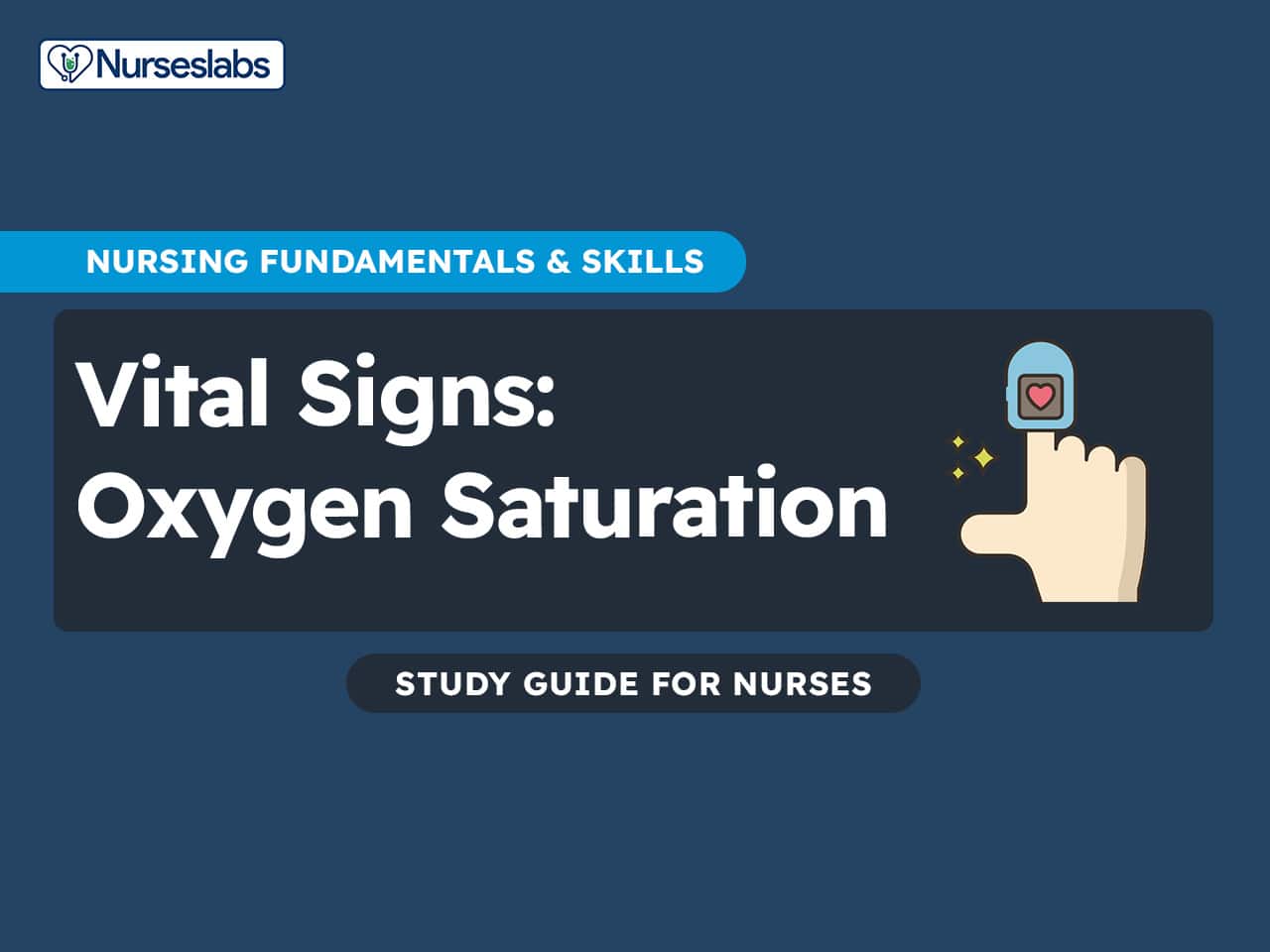

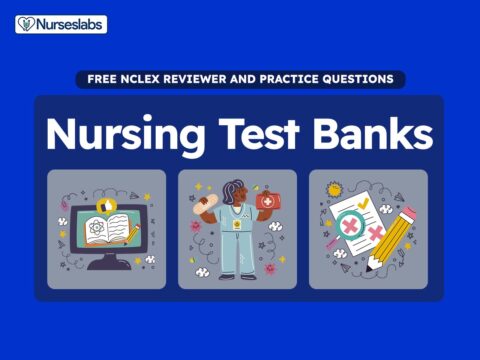

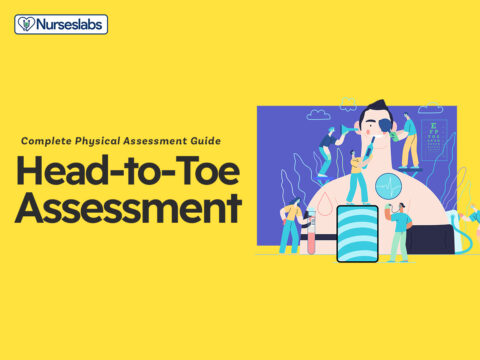

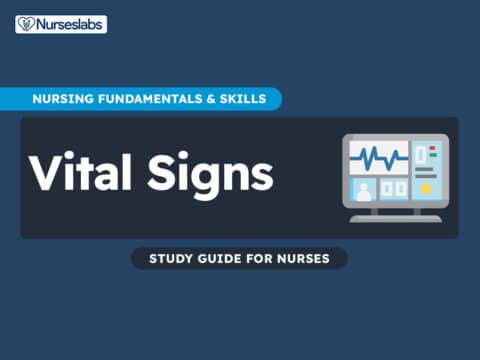

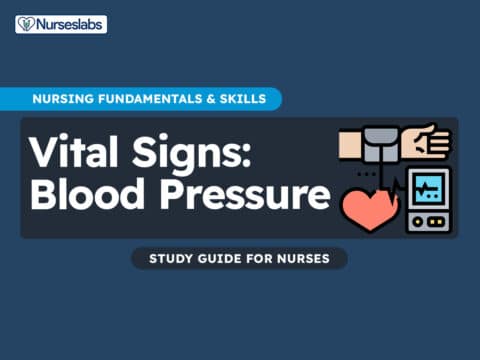


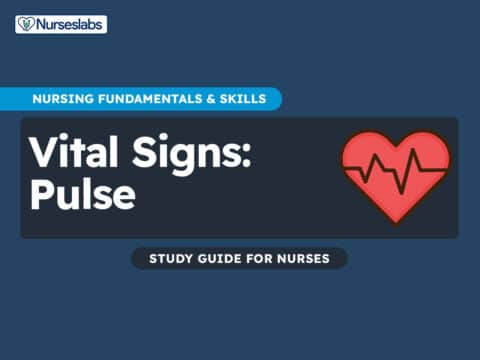
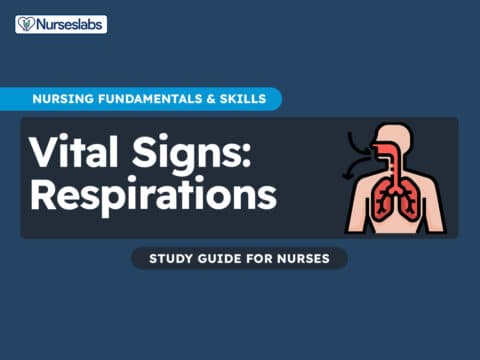
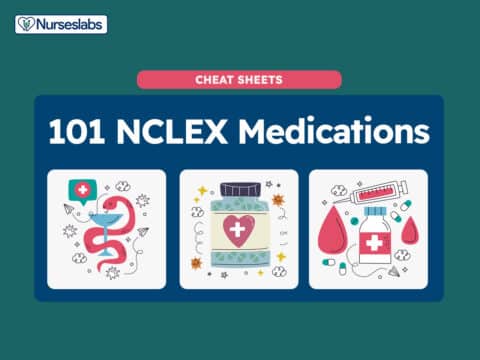

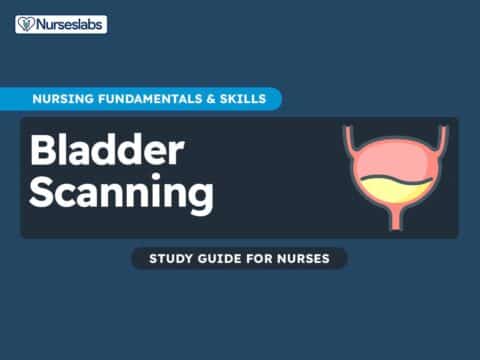



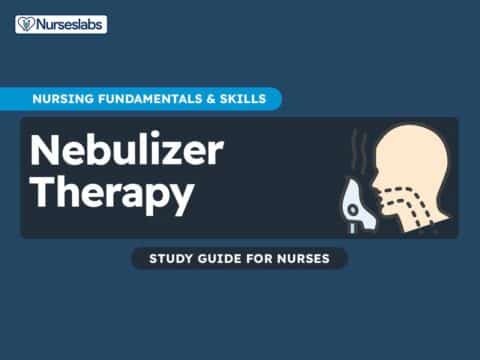







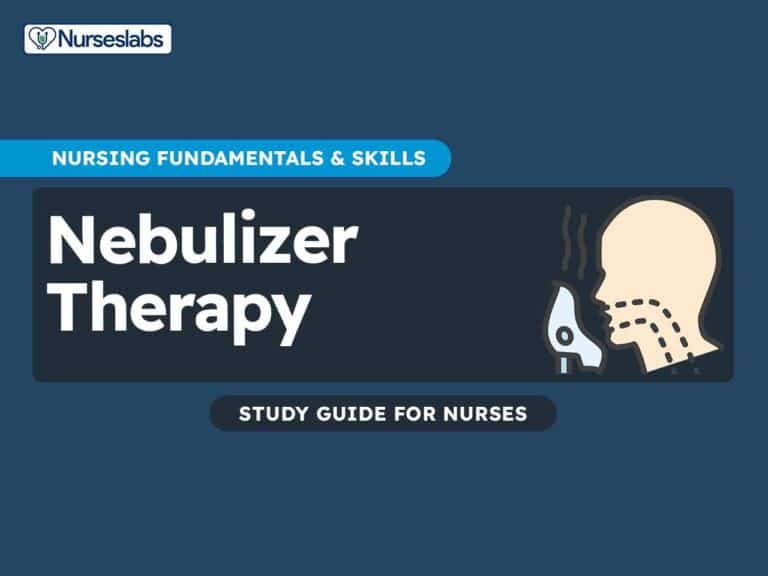
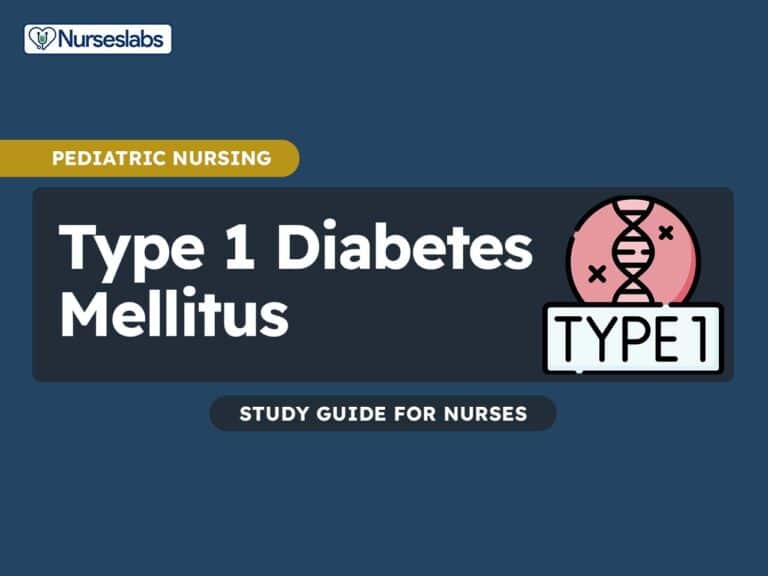

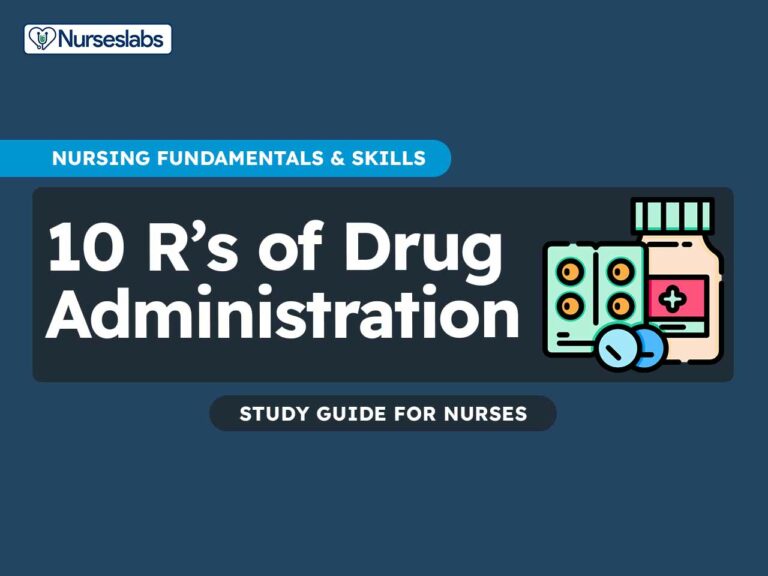




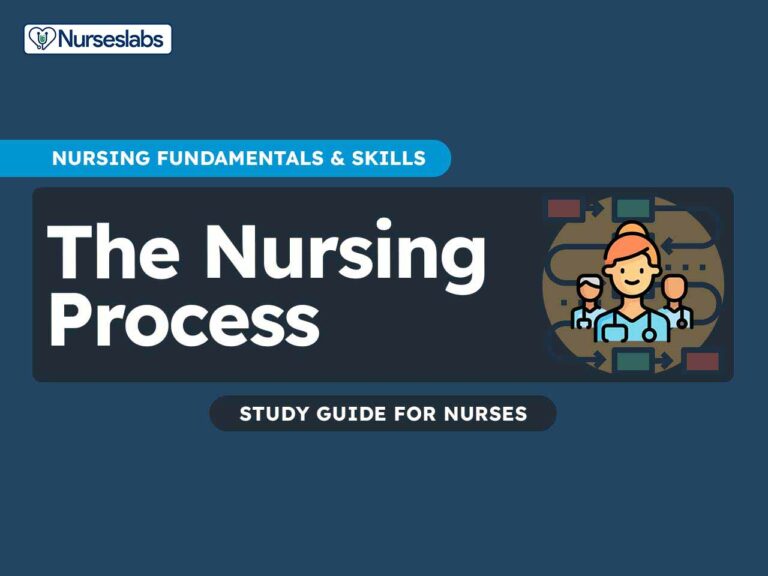
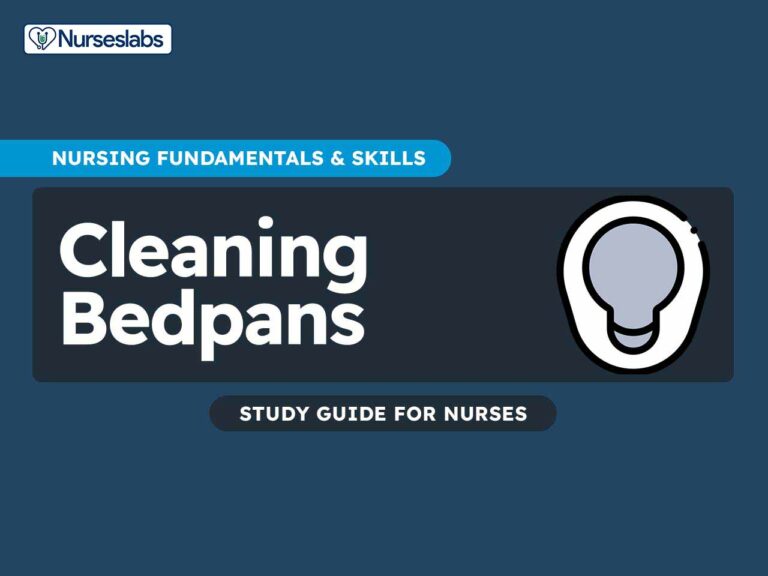
Leave a Comment